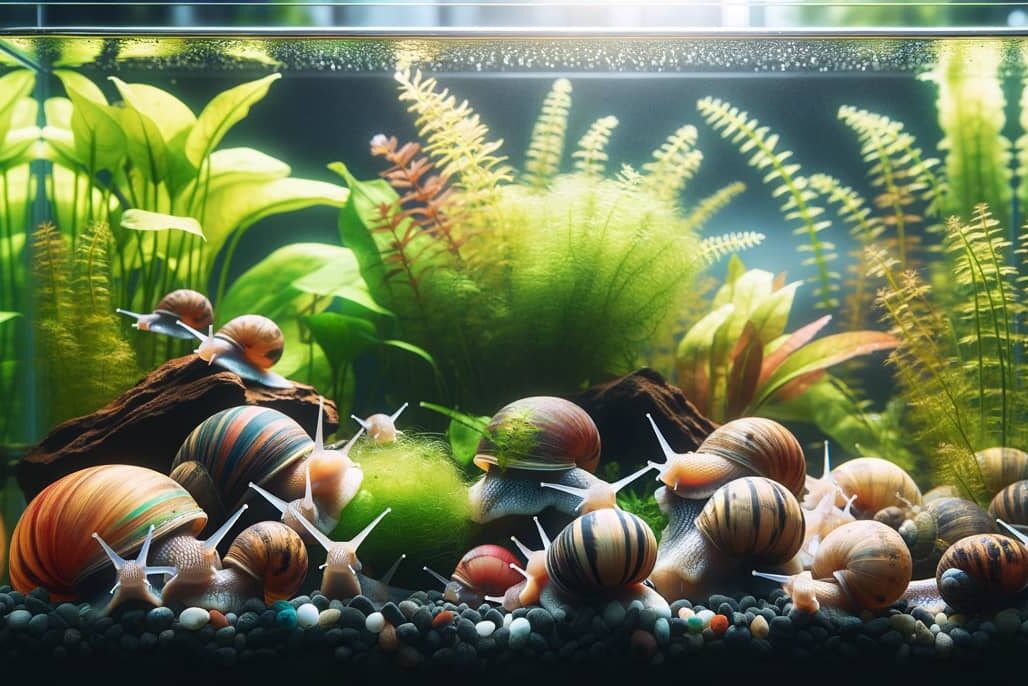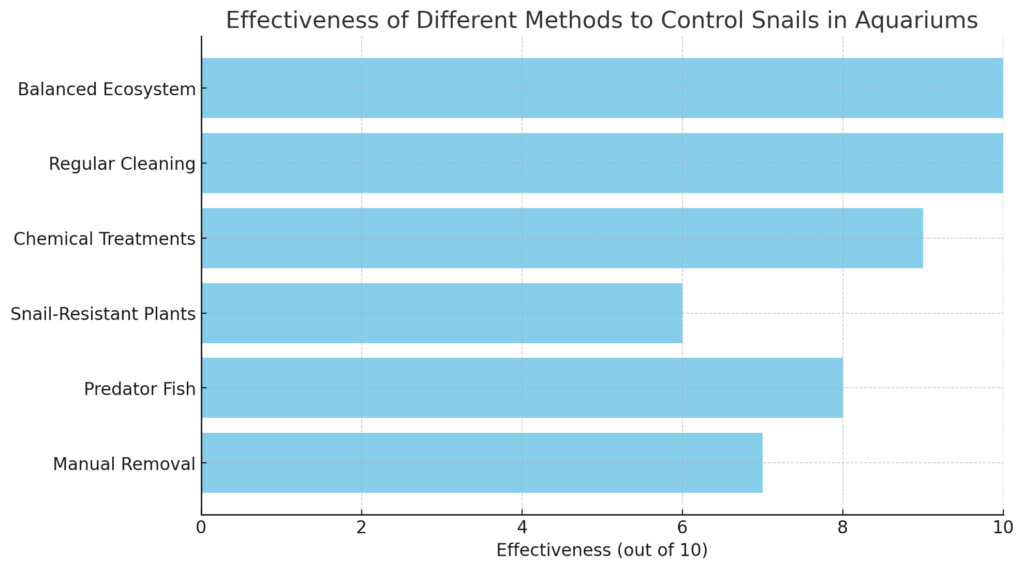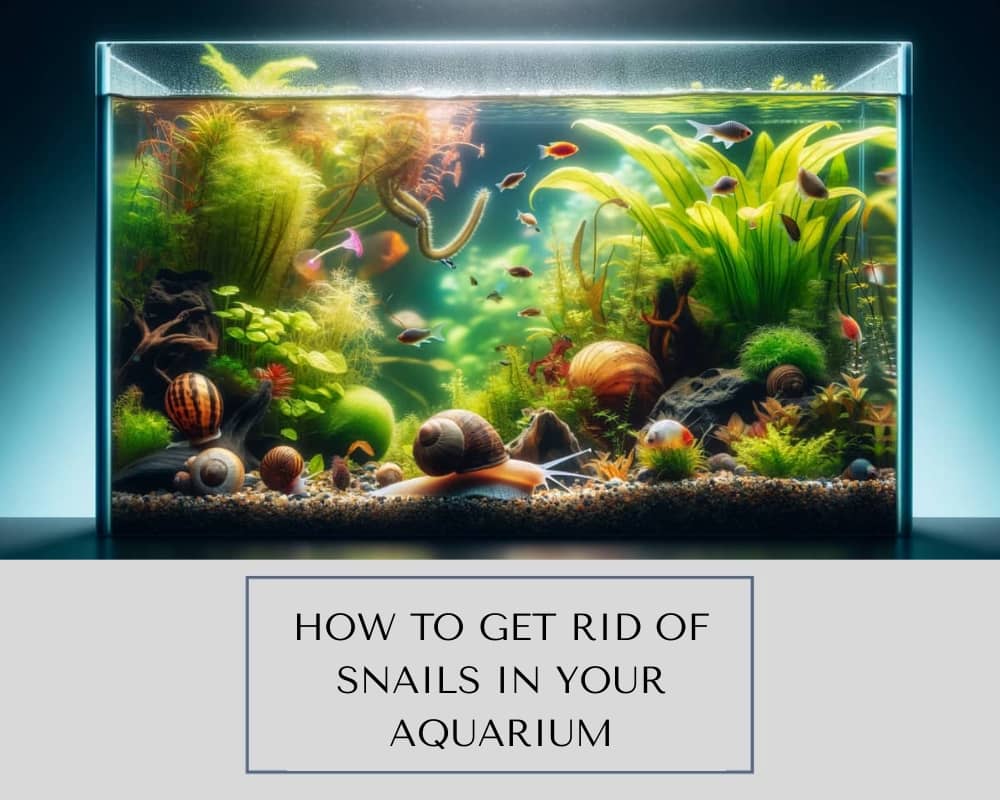Aquarium enthusiasts often find themselves in a slimy situation when their tank becomes overrun with snails. While some snails can be beneficial, overpopulation can lead to significant problems, including harm to plants and an imbalance in the aquarium’s ecosystem.
In this guide, we’ll explore effective methods to control and prevent snail infestations in your aquarium.
Types of Snails and Signs of Infestation
Before taking action, it’s crucial to understand the types of snails in your tank and the extent of the infestation. Common freshwater snails include mystery, nerite, and pest snails like the Malaysian trumpet. Signs of an infestation include visible excess snails, snail eggs on aquarium surfaces, and damage to aquarium plants.
Common Types of Aquarium Snails
- Mystery Snails: Large and colorful, these snails are often introduced intentionally due to their appealing appearance.
- Nerite Snails: Known for their algae-eating habits, they’re a popular choice for algae control but can reproduce quickly if conditions are favorable.
- Malaysian Trumpet Snails: Often introduced unintentionally with plants, these snails burrow into the substrate and can rapidly multiply.
- Pest Snails: This category includes various small species like bladder and ramshorn snails, which often hitchhike on plants or decor.
Signs of Snail Infestation
- Excessive Snail Sightings: A noticeable increase in the number of snails, especially on aquarium glass, plants, and decorations.
- Snail Eggs: Small clusters of eggs on aquarium surfaces, including the tank walls, underside of leaves, and decorations.
- Plant Damage: Unusual holes or nibbled edges on plants can indicate a high snail population.
- Overfeeding Evidence: Excess food that settles at the bottom of the tank can attract and support a growing snail population.

Methods to Control Snail Infestations in Aquariums
Dealing with snail infestations in your aquarium requires a multifaceted approach. Understanding the variety of methods available can help you effectively manage and control these populations. This expanded guide offers a more comprehensive view of natural remedies, chemical treatments, and environmental adjustments to maintain a healthy aquarium.
Natural Remedies
- Introducing Predator Fish
- Species to Consider: Loaches, bettas, and pufferfish.
- Benefits: These fish naturally prey on snails, reducing their numbers.
- Considerations: Ensure compatibility with existing aquatic life to maintain tank harmony.
- Manual Removal
- Method: Regular inspection and physical removal of snails and eggs.
- Effectiveness: Immediate reduction in snail population; requires consistent effort.
- Snail Traps
- Types: Available commercially or can be made DIY.
- Functionality: Lures snails into a trap from which they cannot escape.
- Advantages: Passive method; reduces snail numbers without harming other aquarium inhabitants.
- Balancing Feeding
- Strategy: Avoid overfeeding which leads to excess food, a prime source for snails.
- Result: Controlled feeding limits snail growth by reducing food availability.
Chemical Treatments
- Copper-Based Products
- Usage: Effective against snails but toxic to many aquatic organisms.
- Precaution: Use with care, following specific dosage instructions to avoid harming other aquatic life.
- Snail-Specific Pesticides
- Products: Designed for safe use in aquariums to target snails.
- Application: Follow manufacturer guidelines to protect other tank inhabitants.
Environmental Adjustments
- Substrate Cleaning
- Method: Regular cleaning to remove snail eggs and excess food.
- Benefit: Limits breeding grounds and food sources for snails.
- Water Quality Management
- Focus: Maintain optimal water conditions.
- Impact: Discourages snail overpopulation and supports a healthy aquarium ecosystem.
Each of these methods has its unique advantages and should be selected based on your specific aquarium setup and the severity of the snail problem. Understanding and combining these methods can be the key to effectively managing snail populations in your aquarium.

Preventive Measures: Keeping Snails at Bay
Continuing our discussion on prevention, inspecting and cleaning new additions to your aquarium thoroughly is vital. Snails often hitchhike on plants, so soaking new plants in a snail-killing solution before introducing them to the tank can be helpful.
Regular tank maintenance, including substrate cleaning and filter maintenance, is essential. This reduces the food sources for snails and limits their breeding grounds. For more tips on maintenance, refer to how to clean aquarium sand and aquarium fish supervision.
Remember, balance is key in any aquarium environment. Ensuring a balanced ecosystem through proper feeding, regular maintenance, and careful introduction of new species and plants can greatly reduce the likelihood of snail infestations.
- Gain insights into different aquatic environments with what do aquarium snails eat and aquarium heater guide.
Conclusion
Managing snails in an aquarium can be a challenging but rewarding aspect of fishkeeping. By employing the right combination of natural and chemical methods, along with preventive measures, you can maintain a healthy and balanced aquarium environment. Regular maintenance, careful selection of fish and plants, and responsible chemical use are key to keeping your aquarium snail-free.
For more in-depth information and practical tips on maintaining a healthy and vibrant aquarium, explore the various resources and articles available on SplashExplore.com. Whether you’re a beginner or an experienced aquarist, you’ll find valuable information to enhance your fishkeeping journey.



